 |
 |
 |
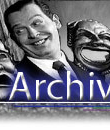 |
 |
 |
 |
 |
 |
Click on the picture of your favorite celebrity to view more information. |
 |
 |
 |
 |
 |
A MATCHLESS LIBRARY TELEVISION ARCHIVE |
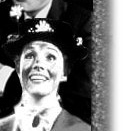 |
|
 |
|
 |
|
 |
|
 |
|
 |
|
 |
|
 |
|
 |
|
 |
|
 |
|
 |
|
 |
|
 |
|
 |
|
 |
|
 |
|
 |
|
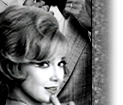 |
|
 |
|
 |
|
 |
|
 |
|
 |
|
 |
|
 |
|
 |
|
 |
|
 |
|
 |
|
 |
|
 |
|
 |
|
 |
|
 |
|
 |
|
 |
|
 |
|
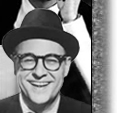 |
|
 |
|
 |
|
 |
|
 |
|
 |
|
 |
|
 |
|
 |
|
 |
|
 |
|
 |
|
 |
|
 |
|
 |
|
 |
|
 |
|
 |
|
 |
|
 |
|
 |
|
 |
|
 |
|
 |
|
 |
|
 |
|
 |
|
 |
|
 |
|
 |
|
 |
|
 |
|
 |
|
 |
|
 |
|
 |
|
 |
|
 |
|
 |
|
 |
|
 |
|
 |
|
 |
|
 |
|
 |
|
 |
|
 |
|
 |
|
 |
|
 |
|
 |
|
 |
|
 |
|
 |
|
 |
|
 |
|
 |
|
 |
|
 |
|
 |
|
 |
|
 |
|
 |
|
 |
|
 |
|
 |
|
 |
|
 |
|
 |
|
 |
|
| Tributes | Talk | Events | News | Variety |
| Documentary | Music | Comedy | Juvenile | Awards |
| Biography | Sports | Productions | Others | Quiz |
| Specials |
|
362 Results found in Category Documentary Pages: [1] 2 3 4 5 6 7 8 |
|
#18829:
YOU ARE THERE
1948-00-00, CBS, 28 min. John Daly An unusual Public Affairs series, You Are There began in 1947 as a radio show (it was originally titled CBS was There). Each week a well-known historical event was recreated, and the leading figures in each drama were interviewed by CBS news correspondents (the correspondents were always in modern-day dress, regardless of the setting of the story). The television version ran from 1953-1957 on Sunday afternoons, and was revived in 1971 as a Saturday-afternoon show, aimed principally at children. Walter Cronkite was the chief correspondent on both TV versions. Paul Newman guest-starred on one program as Nathan Hale (30 August 1953) and the 1971 premiere " The Mystery of Amelia Earhart" featured Geraldine Brooks and Richard Dreyfuss. A CBS Radio Network Production. In tonight's episode: "The Firing On Fort Sumpter, April 12th, 1861." |
|
#18826:
YOU ARE THERE
1948-06-13, CBS, 24 min. John Daly An unusual Public Affairs series, You Are There began in 1947 as a radio show (it was originally titled CBS was There). Each week a well-known historical event was recreated, and the leading figures in each drama were interviewed by CBS news correspondents (the correspondents were always in modern-day dress, regardless of the setting of the story). The television version ran from 1953-1957 on Sunday afternoons, and was revived in 1971 as a Saturday-afternoon show, aimed principally at children. Walter Cronkite was the chief correspondent on both TV versions. Paul Newman guest-starred on one program as Nathan Hale (30 August 1953) and the 1971 premiere " The Mystery of Amelia Earhart" featured Geraldine Brooks and Richard Dreyfuss. You Are There. June 13, 1948. CBS Radio Network - "The Sailing Of The Mayflower". The events of September 6, 1620. |
|
#18828:
YOU ARE THERE
1948-09-19, CBS, 29 min. John Daly
An unusual Public Affairs series, You Are There began in 1947 as a radio show (it was originally titled CBS was There). Each week a well-known historical event was recreated, and the leading figures in each drama were interviewed by CBS news correspondents (the correspondents were always in modern-day dress, regardless of the setting of the story). The television version ran from 1953-1957 on Sunday afternoons, and was revived in 1971 as a Saturday-afternoon show, aimed principally at children. Walter Cronkite was the chief correspondent on both TV versions. Paul Newman guest-starred on one program as Nathan Hale (30 August 1953) and the 1971 premiere " The Mystery of Amelia Earhart" featured Geraldine Brooks and Richard Dreyfuss.
You Are There. September 19, 1948. CBS Radio Network "The Ratification Of The Constitution". Sustaining. The events of June 25, 1788. Governor Randolph of Virginia changes his mind, ending the bitter divisiveness of the Constitutional Convention.
|
|
#18827:
YOU ARE THERE
1949-00-00, CBS, 28 min. John Daly An unusual Public Affairs series, You Are There began in 1947 as a radio show (it was originally titled CBS was There). Each week a well-known historical event was recreated, and the leading figures in each drama were interviewed by CBS news correspondents (the correspondents were always in modern-day dress, regardless of the setting of the story). The television version ran from 1953-1957 on Sunday afternoons, and was revived in 1971 as a Saturday-afternoon show, aimed principally at children. Walter Cronkite was the chief correspondent on both TV versions. Paul Newman guest-starred on one program as Nathan Hale (30 August 1953) and the 1971 premiere " The Mystery of Amelia Earhart" featured Geraldine Brooks and Richard Dreyfuss. A CBS Radio Network broadcast. In tonight's episode: "The Opening Of The American Revolution, April 19th, 1775." |
|
#18830:
YOU ARE THERE
1949-00-00, CBS, 29 min. John Daly An unusual Public Affairs series, You Are There began in 1947 as a radio show (it was originally titled CBS was There). Each week a well-known historical event was recreated, and the leading figures in each drama were interviewed by CBS news correspondents (the correspondents were always in modern-day dress, regardless of the setting of the story). The television version ran from 1953-1957 on Sunday afternoons, and was revived in 1971 as a Saturday-afternoon show, aimed principally at children. Walter Cronkite was the chief correspondent on both TV versions. Paul Newman guest-starred on one program as Nathan Hale (30 August 1953) and the 1971 premiere " The Mystery of Amelia Earhart" featured Geraldine Brooks and Richard Dreyfuss. A CBS Radio Network Production. In tonight's episode: "The Battle Of Gettysburg, July 3rd, 1863." |
|
#18831:
YOU ARE THERE
1949-06-05, CBS, 28 min. John Daly , Douglas Edwards , John Wilkes Booth An unusual Public Affairs series, You Are There began in 1947 as a radio show (it was originally titled CBS was There). Each week a well-known historical event was recreated, and the leading figures in each drama were interviewed by CBS news correspondents (the correspondents were always in modern-day dress, regardless of the setting of the story). The television version ran from 1953-1957 on Sunday afternoons, and was revived in 1971 as a Saturday-afternoon show, aimed principally at children. Walter Cronkite was the chief correspondent on both TV versions. Paul Newman guest-starred on one program as Nathan Hale (30 August 1953) and the 1971 premiere " The Mystery of Amelia Earhart" featured Geraldine Brooks and Richard Dreyfuss.
You Are There. June 05, 1949. CBS Radio Network. "The Capture Of John Wilkes Booth". The events of April 26, 1865.
|
|
#10669:
DOCUMENTARY SPECIAL: PRESIDENT TRUMAN-GENERAL MACARTHUR CONTROVERSY
1951-05-01, , min. Harry S. Truman , Douglas MacArthur , Franklin Roosevelt , Robert Taft , Madame Chiang Kai-Shek , Trygvie Lie , Courtney Whitney , Joseph Martin , Jonathan Wainwright , Edvard Benes , Maury Maverick Highlights of the General's career; including WW1,WW11, and the Korean conflict. Emphasis on his handling of the Korean war and comments concerning his firing from the Far East Command. Voices include that of President Truman, Senator Taft, General Wainwright, Franklin Roosevelt, Madame Chiang Kai-Shek, Edvard Benes. Representative Joseph Martin reads the MacArthur letter complaining about restrictions in Korea. Also, Major General Courtney Whitney, General MacArthur, Representative Maury Maverick, and UN Secretary General Trygvie Lie. |
|
#11342:
YOU ARE THERE
1954-09-05, CBS, 27 min. Walter Cronkite , Mike Wallace , Louis Armstrong , Ned Calmer , Lou Cioffi , Cozy Cole , Harry Marble , Bobby Hackett , Billy Taylor October 1st, 1953-October 13th, 1957. September 11th, 1971-September 2nd, 1972. (CBS)
Tonight's episode: Louis Armstrong stars as the Jazz great King Oliver in "The Emergence Of Jazz." The date is November 20th, 1917 when the Storyville section of New Orleans was closed. Walter Cronkite and the CBS newsmen trace the evolution of the American jazz form as it found a home in the dance halls of California and the bistros of Paris.
An unusual Public Affairs series, You Are There began in 1947 as a radio show (it was originally titled CBS was There). Each week a well-known historical event was recreated, and the leading figures in each drama were interviewed by CBS news correspondents (the correspondents were always in modern-day dress, regardless of the setting of the story). The television version ran from 1953-1957 on Sunday afternoons, and was revived in 1971 as a Saturday-afternoon show, aimed principally at children. Walter Cronkite was the chief correspondent on both TV versions. Paul Newman guest-starred on one program as Nathan Hale (30 August 1953) and the 1971 premiere " The Mystery of Amelia Earhart" featured Geraldine Brooks and Richard Dreyfuss.
|
|
#11343:
YOU ARE THERE
1954-09-12, CBS, 27 min. Walter Cronkite , Lorne Greene , Wesley Addy , Ned Calmer , Harry Marble , Parker Fennelly October 1st, 1953-October 13th, 1957. September 11th, 1971-September 2nd, 1972. (CBS)
Tonight's episode: William Pitt's last speech to Parliament is recreated for viewers. The cameras travel back in time to cover the famous Englishman's final effort to change England's policy toward its American colonies. Lorne Greene, Wesley Addy.
An unusual Public Affairs series, You Are There began in 1947 as a radio show (it was originally titled CBS was There). Each week a well-known historical event was recreated, and the leading figures in each drama were interviewed by CBS news correspondents (the correspondents were always in modern-day dress, regardless of the setting of the story). The television version ran from 1953-1957 on Sunday afternoons, and was revived in 1971 as a Saturday-afternoon show, aimed principally at children. Walter Cronkite was the chief correspondent on both TV versions. Paul Newman guest-starred on one program as Nathan Hale (30 August 1953) and the 1971 premiere " The Mystery of Amelia Earhart" featured Geraldine Brooks and Richard Dreyfuss.
|
|
#11340:
"THREE, TWO, ONE...ZERO: PROJECT 20
1954-09-13, NBC, 55 min. Robert Montgomery , Sid Caesar , Alexander Scourby , Robert Russell Bennett , Richard Hanser , Stephen Vincent Benet , Henry Salomon , Isaac Kleinerman Project 20 - September 13, 1954 - May 27, 1970 A series of 34 broadcast documentary SPECIALS. This chronicle of the impact of the atomic age on humanity was produced by Henry Salomon's documentary unit, with the technical assistance of the Atomic Energy Commission and high-placed government officials. Although aired before the Project 20 title was conceived, the program is considered the first of the Project 20 reports. Much of the broadcast consists of newsreel footage, but for certain important events, no cameras were present and reenactments were specially filmed with the participation of the actual figures involved. The subject was broken into five separate parts: ""The Bomb Explodes," a look at the 7-16-45 Hiroshima explosion; "The Atom's History," a report on the development of atom research and testing; "The Atom; A Political Force," an examination of US security policy, Soviet atomic development, and the Rosenberg trials; "The Future," a look at the future of nuclear power; and "Epilogue," a prayer written and read by Stephen Vincent Benet. Written by Richard Hanser who would write 21 PROJECT 20 programs in the series. Music by Robert Russell Bennett who would compose the music of 22 PROJECT 20 programs in the series. NOTE: At the conclusion of this broadcast Host Robert Montgomery and guest Sid Caesar appear, LIVE, and discuss the program just aired. Caesar also promotes his new series CEASAR'S HOUR which begins two weeks from tonight. Soon after VICTORY AT SEA concluded production, supervising producer Henry Solomon asked for and was granted permission by NBC to keep his production unit intact for the purpose of creating new programs that would follow in the tradition of that popular and critically acclaimed groundbreaking series. In 1954, Solmon, along the Donald B. Hyatt, Isaac Kleinerman, Richard Hanser, and Robert Russell Bennett, began production on a group of compilation documentaries they christened PROJECT 20. Using a name derived from that of the 20th century, Solomon and company periodically recreated some significant lives, events, periods, and trends of the 1900's through an effective marriage of archival news film and still photos enhanced with narration provided by Alexzander Scourby who contributed to eleven productions. After Salomon's death in 1957, Donald B. Hyatt took over as head of the PROJECT 20 team, serving as producer and director for all subsequent programs. Hyatt quickly moved away from the strictly twentieth-century nature of series offering programs on the American West, THE REAL WEST, narrated by Gary Cooper, HE IS RISEN, the Life and Times of Jesus Christ, END OF THE TRAIL, narrated by Walter Brennan, a portrait of George Washington, MEET GEORGE WASHINTON, narrated by Melvyn Douglas, and others. As time passed, PROJCET 20 became universally recognized as one of American television's most enduring and honored series, winning hundreds of national and international awards for broadcasts that were aired time and again over the years. |
|
#10344:
"I SEARCH FOR ADVENTURE"
1957-03-09, SYN, 30 min. John D. Craig 1954 Half-hour documentary series hosted by John D. Craig, featuring films taken by modern-day adventurers. This episode: "Antarctic Expedition." |
|
#11135:
SCIENCE SERIES: "HEMO THE MAGNIFICENT"
1957-03-20, CBS, 60 min. Frank Capra , Richard Carlson , Dr. Frank Baxter Hemo comes from the Greek word for blood and tonight's one-hour film is about our blood, how it circulates and what its functions are. One way of showing these things will be through the use of animated cartoons and cartoon characters such as Hemo himself, Professor Anatomy and the pacemaker. There will also be special medical films, and the whole show will be tied together through the appearance of Dr. Research and The Fiction Writer, as they try to visualize our circulatory system. The show will open with a Chronicle of man's knowledge about blood. Then animated sequences will show the heart pumping blood, the lungs slipping oxygen into it and other organs in the system functioning. The intricate system of tubes, arteries, capillaries, and veins, that conduct the blood on its errands, is geographically presented. A theory is offered to account for the presence of blood in man, and microscopic film shots show the capillaries in action. We see what happens to the blood in a knockout and in a state of shock. Dr. Research is played by Dr. Frank Baxter, who performed the same role in "Our Mr. Sun." Actor Richard Carlson plays The Fiction Writer. Written and directed by Frank Capra. Educational film from Bell Laboratories. |
|
#11396:
YOU ARE THERE
1957-09-01, CBS, 30 min. Walter Cronkite , Adolf Hitler An unusual Public Affairs series, You Are There began in 1947 as a radio show (it was originally titled CBS was There). Each week a well-known historical event was recreated, and the leading figures in each drama were interviewed by CBS news correspondents (the correspondents were always in modern-day dress, regardless of the setting of the story). The television version ran from 1953-1957 on Sunday afternoons, and was revived in 1971 as a Saturday-afternoon show, aimed principally at children. Walter Cronkite was the chief correspondent on both TV versions. Paul Newman guest-starred on one program as Nathan Hale (30 August 1953) and the 1971 premiere " The Mystery of Amelia Earhart" featured Geraldine Brooks and Richard Dreyfuss. This episode: "Hitler Invades Poland." A dramatic re-enactment of events on September 1st, 1939 when the thunder of massive German armies moved into Poland. Walter Cronkite and staff cover the story. SELECTIONS FROM ORIGINAL GRAY AUDOGRAPH DISC RECORDINGS, RECORDED OFF THE AIR, REPRESENTING SEVEN CONSECUTIVE DAYS OF KNXT LOS, ANGELES BROADCASTING, SUNDAY, SEPTEMBER 1 THRU 7, 1957. These LOST CBS broadcasts represent an unprecedented one complete week, sign on to sign off, September 1, 2, 3, 4, 5, 6, 7, 1957 (130 hours on 130 8 & 1/2" diameter discs with a capacity to record 32 minutes per side (side one and side two had the potential capacity to record 64 minutes). These discs were obtained in Los Angeles by Phil Gries, creator and owner of Archival Television Audio, Inc. in 2011. They were originally found in an establishment, located in Burbank, California, selling old records dispersing its inventory as they went out of business, a few years before. The rarity of this type of media to record television is not known to have occured beyond a few incidents, as stated below, at any other time, which make this collection of TV Audio Airchecks, recorded on Gray Audograph discs, an amazing surviving artifact. The sound quality varies with different broadcasts. After a period of almost three years, processing and digitizing these 130 two sided discs, there is recognition of the rarity of some of these broadcasts providing one of a kind surviving Television Audio Airchecks and are extremely desirable regardless of some of the extraneous sound artifacts heard on some of these tracks which were painstakingly processed and transferred one by one to optimize the sound quality and proper pitch. NOTE: To listen to a seminar Phil Gries presented at an ARSC presentation in Chapel Hill, North Carolina, in 2014, about these Gray Audograph Discs...their genesis, discovery and contents, go to the ATA website www.atvaudio.com and click on ARSC which can be found within the right column on the ATA Home Page. GRAY AUDIOGRAPH (1946 - 1976) History: The Gray Audograph was a dictation disc recording format introduced in 1946 by the Gray Manufacturing Company in the United States. It recorded sound by pressing grooves into soft vinyl discs, like the competing, but incompatible, SoundScriber and VoiceWriter formats. Audiograph discs were blue thin plastic flexible discs, recorded from the inside to the outside, the opposite of conventional phonograph discs. Another difference compared to phonograph discs (78, 45, 33 & 1/2) was that the audiograph was driven by a surface-mounted wheel, meaning that its recording and playback speed decreased toward the edge of the disc (like the Compact Disc and other digital formats), to keep a more constant linear velocity and to improve playing time. The mandatory speed variation correction requires playback on an Audograph player, which ATA possesses and has modified, allowing line out output connections, direct line, to the input of any other recording format device. Gray Audograph discs were available in three different sizes. The 6-inch diameter disc offered 10 minutes of recording time per side, the 6 & 1/2" disc offered 15 minutes per side. The 8 & 1/2" disc, which is extant in the ATA archive, offered 30 minutes of recording per side. ALONG WITH THE DICTABELT RECORDER, A GRAY AUDOGRAPH RECORDER MACHINE CAPTURED THE ACTUAL LIVE SOUNDS RECORDED OF GUN SHOTS AT THE TIME OF THE JOHN F. KENNEDY ASSASSINATION. THESE AUDIO SOUNDS WERE USED IN THE REVIEW BY THE UNITED STATES HOUSE SELECT COMMITTEE ON ASSASSINATIONS. THE GRAY COMPANY CEASED MANUFACTURE OF THE GRAY AUDOGRAPH RECORDER IN 1976. |
|
#11466:
FOCUS ON SANITY
1957-09-04, KNXT, 30 min. Gerald Heard , Aldous Huxley A series of eight half-hour shows, delving into, probing, and investigating mental health and illness in California. Documentary film was shown by KNXT cameramen. The series featured Gerald Heard and Aldous Huxley. It utilized many high qualified medical and psychological authorities and aired on KNXT, Los Angeles. This is the final show of the series. SELECTIONS FROM ORIGINAL GRAY AUDOGRAPH DISC RECORDINGS, RECORDED OFF THE AIR, REPRESENTING SEVEN CONSECUTIVE DAYS OF KNXT LOS, ANGELES BROADCASTING, SUNDAY, SEPTEMBER 1 THRU 7, 1957. These LOST CBS broadcasts represent an unprecedented one complete week, sign on to sign off, September 1, 2, 3, 4, 5, 6, 7, 1957 (130 hours on 130 8 & 1/2" diameter discs with a capacity to record 32 minutes per side (side one and side two had the potential capacity to record 64 minutes). These discs were obtained in Los Angeles by Phil Gries, creator and owner of Archival Television Audio, Inc. in 2011. They were originally found in an establishment, located in Burbank, California, selling old records dispersing its inventory as they went out of business, a few years before. The rarity of this type of media to record television is not known to have occured beyond a few incidents, as stated below, at any other time, which make this collection of TV Audio Airchecks, recorded on Gray Audograph discs, an amazing surviving artifact. The sound quality varies with different broadcasts. After a period of almost three years, processing and digitizing these 130 two sided discs, there is recognition of the rarity of some of these broadcasts providing one of a kind surviving Television Audio Airchecks and are extremely desirable regardless of some of the extraneous sound artifacts heard on some of these tracks which were painstakingly processed and transferred one by one to optimize the sound quality and proper pitch. NOTE: To listen to a seminar Phil Gries presented at an ARSC presentation in Chapel Hill, North Carolina, in 2014, about these Gray Audograph Discs...their genesis, discovery and contents, go to the ATA website www.atvaudio.com and click on ARSC which can be found within the right column on the ATA Home Page. GRAY AUDIOGRAPH (1946 - 1976) History: The Gray Audograph was a dictation disc recording format introduced in 1946 by the Gray Manufacturing Company in the United States. It recorded sound by pressing grooves into soft vinyl discs, like the competing, but incompatible, SoundScriber and VoiceWriter formats. Audiograph discs were blue thin plastic flexible discs, recorded from the inside to the outside, the opposite of conventional phonograph discs. Another difference compared to phonograph discs (78, 45, 33 & 1/2) was that the audiograph was driven by a surface-mounted wheel, meaning that its recording and playback speed decreased toward the edge of the disc (like the Compact Disc and other digital formats), to keep a more constant linear velocity and to improve playing time. The mandatory speed variation correction requires playback on an Audograph player, which ATA possesses and has modified, allowing line out output connections, direct line, to the input of any other recording format device. Gray Audograph discs were available in three different sizes. The 6-inch diameter disc offered 10 minutes of recording time per side, the 6 & 1/2" disc offered 15 minutes per side. The 8 & 1/2" disc, which is extant in the ATA archive, offered 30 minutes of recording per side. ALONG WITH THE DICTABELT RECORDER, A GRAY AUDOGRAPH RECORDER MACHINE CAPTURED THE ACTUAL LIVE SOUNDS RECORDED OF GUN SHOTS AT THE TIME OF THE JOHN F. KENNEDY ASSASSINATION. THESE AUDIO SOUNDS WERE USED IN THE REVIEW BY THE UNITED STATES HOUSE SELECT COMMITTEE ON ASSASSINATIONS. THE GRAY COMPANY CEASED MANUFACTURE OF THE GRAY AUDOGRAPH RECORDER IN 1976. |
|
#11213:
WIDE, WIDE, WORLD WITH DAVE GARROWAY
1957-09-15, NBC, min. Charles Van Doren , Dave Garroway October 16th, 1955-June 8th, 1958, (NBC) Sunday afternoon documentary series. Most of the the ninety-minute shows focused on a single topic, and featured live reports throughout North America. It was hosted by Dave Garroway. On this season premiere, host Dave Garroway takes a fascinating look into our interplanetary future. The men and missiles, the project's and prospects, on "The Challenge Of Space." At the Aero-Medical Center of the Wright Air Development, men are undergoing rigorous testing to learn how space suits should be designed. In Edwards, California, at the Air Force Flight Test Center, X-planes set records for altitude and speed. Washington D.C., the story of the earth satellite is recounted at the Vanguard Computing Center. Huntsville, Alabama, A giant missile is assembled and test-fired at Rocket City. Santa Suzana, Cal, A powerful rocket engine undergoes test-firing at Rocketdyne Facilities. Guest: Charles Van Doren. |
|
#11134:
SCIENCE SERIES: "THE UNCHAINED GODDESS"
1958-02-12, NBC, 60 min. Mel Blanc , Hans Conried , Dr Frank Baxter , Richard Carlson , Lurene Tuttle , Ken Peters , Franklin Pangborn , Jay Novello With the help of animated characters, the Fiction Writer (Richard Carlson), and Dr. Frank Baxter, talk about the weather and describe what scientists are doing about it. They illustrate the origins of such weather elements as wind, clouds, rain, snow, hail and lightning: show how these elements combine to produce weather and depict scientific attempts to predict and control weather. Shamus Culhane Productions did the animation for the hour-long filmed program, which was produced by Frank Capra. Mel Blanc, Hans Conried, Lurene Tuttle, Franklin Pangborn, Jay Novello, and Ken Peters are the voices of the cartoon characters. |
|
#19152:
"WE TAKE YOU BACK"
1958-03-13, CBS, min. TBA A CBS radio documentary, focusing on historical events of the past. |
|
#11212:
TWENTIETH CENTURY: "CEILING UNLIMITED"
1958-04-20, CBS, 30 min. Walter Cronkite , James Van Allen , Wernher Von Braun , Krafft Ehricke , James Dempsey , John Medaris , Iven Kincheloe October 20th,1957-September 7th, 1969 {CBS}
Walter Cronkite hosted this Sunday-evening documentary series, which presented filmed reports on a wide variety of historical and scientific subjects. In January of 1967, the show's title was changed to The Twenty-First Century.
Walter Cronkite presents an hour-long report on satellites, space and space travel, to learn where we stand in our efforts to solve the mysteries of space and conquer it. Cronkite has been traveling around the country, visiting scientific and military installations and talking with space authorities. Today he presents his findings.
there are filmed interviews with rocket experts Dr. Wernher Von Braun, Dr. Krafft Ehricke, James Dempsey, and General John Medaris; Dr. James Van Allen, designer of earth satellites; and Captain Iven Kincheloe, who plans to take a plane beyond the earth's atmosphere next year.
The scientific controversies about space are outlined. A Soviet film previews man's conquest of space.
|
|
#6958A:
THE AMERICAN JEW
1958-12-07, CBS, 00 min. Al Capp , Susan Strasberg , Jeff Chandler , Stan Freeman A documentary tribute to freedom is the subject of this Special. A portrait of the Jew as an American and as representative of our minority cultures. Includes interviews and various performances. Susan Strasberg does a scene from the play "Diary of Anne Frank." Host: Jeff Chandler |
|
#11136:
"ALPHABET CONSPIRACY, THE"
1959-01-26, CBS, 60 min. Hans Conried , Dr. Frank Baxter , Cheryl Calloway , Delores Starr , Stanley Adams , Cactus Mack , Daws Butler , Shorty Rogers The Arabs have more than 6,000 words to describe a camel and its trappings. Hopi Indians cannot grammatically express past, present, or future. All babies have a common language. Discover these facts, and many more in the fascinating story of how and why people speak as they do in the world's 5,000 languages. "The Alphabet Conspiracy," told as a delightful fantasy, stars, Dr. Frank Baxter, Hans Conried, with Cheryl Calloway, Dolores Starr, and Stanley Adams. Also starring Cactus Mack, Shorty Rogers and Daws Butler. |
|
#13349:
VICTORY AT SEA
1959-05-28, NBC, 2 min. Richard Rodgers , Leonard Graves October 26th, 1952-April 26th, 1953 NBC
A documentary series of 26 half-hour films on naval warfare during WW11. Leonard Graves was the narrator while Richard Rodgers composed a special musical score. In later years the program was rerun in syndication.
NOTE: OPENING ONLY
|
|
#4:
TWENTIETH CENTURY: THE MOVIES LEARN TO TALK
1959-10-25, WCBS, 26 min. Walter Cronkite Walter Cronkite narrates a history of the talking motion pictures. |
|
#13401:
TWENTIETH CENTURY, THE
1959-11-22, CBS, min. Walter Cronkite , Edward R. Murrow , Montgomery Clark October 20th, 1957-September, 1969 Walter Cronkite hosted this Sunday-evening documentary series, that presented filmed reports on a wide variety of historical and scientific subjects. In January of 1967, the show's title was changed to The Twenty-First Century. General Montgomery Clark reminisces about WW 11. with Edward R. Murrow. Host: Walter Cronkite. |
|
#18782:
PROJECT 20: NOT SO LONG AGO
1960-02-19, WNBC, 52 min. Robert Russell Bennett , Richard Hanser , Donald B. Hyatt , Bob Hope The post WWII period, 1945-1950 is recalled by narrator Bob Hope. Original msuic score by Robert Russell Bennett. Written by Richard Hanser. Produced and directed by Donald B. Hyatt. Dupe of entry #9. |
|
#9:
PROJECT 20: NOT SO LONG AGO
1960-02-19, WNBC, 52 min. Robert Russell Bennett , Richard Hanser , Donald B. Hyatt , Bob Hope The post WWII period, 1945-1950 is recalled by narrator Bob Hope. Original msuic score by Robert Russell Bennett. Written by Richard Hanser. Produced and directed by Donald B. Hyatt. |
|
#10:
SECRET LIFE OF ADOLF HITLER, THE
1960-02-25, WPIX, 54 min. Adolf Hitler , Paula Wolf , Westbrook Van Voorhis The many faces of Adolf Hitler are documented. Frau Paula Wolf, the sister of Hitler is interviewed. Westbrook Van Voorhis provides the narration. |
|
#11:
TWENTIETH CENTURY: TURN OF THE CENTURY
1960-02-28, WCBS, 25 min. Walter Cronkite Walter Cronkite narrates. |
|
#12:
PROJECT 20: LIFE IN THE THIRTIES
1960-03-13, WNBC, 52 min. Alexander Scourby , Robert Russell Bennett , Richard Hanser , Donald B. Hyatt Alexander Scourby narrates. Music of the period is conducted by composer Robert Russell Bennett. Written by Richard Hanser. Produced and directed by Donald B. Hyatt. Originally aired Oct. 16, 1959. |
|
#15:
TWENTIETH CENTURY: PARIS IN THE TWENTIES
1960-04-17, WCBS, 26 min. Walter Cronkite , Ernest Hemingway , Janet Flanner , Man Ray Walter Cronkite narrates.
A retrospective of Paris, a spawning ground for a revolution in the arts, sparked by a host of American expatriates from the world of literature, painting and the theater. Among those players include authors Ernest Hemingway, James Joyce, Ezra Pound, T.S. Eliot, Colette, E.E.Cummings, Archibald MacLeish, Thornton Wilder, F. Scott Fitzgerald, John Dos Passos, Sherwood Anderson, Hart Crane and Stephen Vincent Benet. Performers include Charlie Chaplin, Josephine Baker, Marilyn Miller, Beatrice Lillie, Judith Anderson, Douglas Fairbanks and Mary Pickford; artists Pablo Picasso, Jo Davidson and Alexander Calder. Janet Flanner, who as "Genet" is the New Yorker's Paris correspondent, and artist-photographer Man Ray contribute their reminiscences.
|
|
#16:
PROJECT 20: MARK TWAIN'S AMERICA
1960-04-22, WNBC, 52 min. Robert Russell Bennett , Richard Hanser , Donald B. Hyatt , Mark Twain , Howard Lindsay The narration consists almost wholly of Mark Twain's words and is spoken by actor-playwright Howard Lindsay. Original music score by Robert Russell Bennett. Written by Richard Hanser. Produced and directed by Donald B. Hyatt. |
|
#11222:
"RACE FOR SPACE"
1960-04-24, SYN, min. Mike Wallace , Dr. Robert Goddard , Esther Christine Kisk The story of man's attempts to explore the universe. This documentary was produced by David Wolper who acquired Russian space film and assembled highlights into this revealing presentation. In order to distribute this film, David Wolper set up 127 independent stations to carry this special, which the networks rejected to air. Host: Dr. Robert Goddard. Esther Goddard (Esther Christine kisk), wife of Dr. Robert Goddard, is interviewed. Note: This special was nominated as Best Documentary Feature. Narrated by Mike Wallace. |
|
#17:
TWENTIETH CENTURY: FIORELLO LAGUARDIA
1960-04-24, WCBS, 26 min. Walter Cronkite , Fannie Hurst , Fiorello LaGuardia Walter Cronkite narrates. |
|
#23:
TWENTIETH CENTURY: PERON AND EVITA
1960-05-15, WCBS, 27 min. Walter Cronkite Walter Cronkite narrates. |
|
#30:
HOW TALL IS THE GIANT?
1960-06-14, WNBC, 79 min. Tennessee Ernie Ford This 1957 film tells the story of the ambition and courage of a Mexican Little League team who win the Little League World Series. Tennessee Ernie Ford is host. |
|
#13458:
REMEMBER US
1960-07-18, WNEW, 53 min. Adolf Hitler , Steven Spielberg , Phil Gries , Quentin Reynolds , Dr. Gisela Perl , Sonia Weissman , Janus T. , Alain Resnais , Leo Weissman
1 Results found for Remember Us
Pages: [1]
#13458: REMEMBER US
1960-07-18, WNEW, 53 min.
Adolf Hitler, Steven Spielberg, Phil Gries, Quentin Reynolds, Dr. Gisela Perl, Sonia Weissman, Janus T., Alain Resnais, Leo Weissman
A one-hour special report. Jewish survivors of Nazi atrocities and concentration camp horrors relate their past experiences.
Quentin Reynolds is the host and narrator.
"Nothing will remain of the Jewish question but a cemetery," predicted a Nazi official when Hitler's program to eliminate the Jews began in earnest in 1938. Many hundreds of cemeteries were filled before Allied victory halted the Nazi machine in 1945. " REMEMBER US" tells the story of the millions of European Jews who died in prison camps and ghettos during this period, and of those who survived.
Past footage from Documentary films and the accounts of survivors are used to piece together a scenario of life and death as Typhus and starvation stalked the prisoners in the concentration camps, including Dachau, Breendonk, Auschwitz, and Buchenwald, and the ghettos of Europe. Survivors describe the resistance which met the Nazi decision to destroy the Warsaw ghetto in 1943, lengthy trips by cattle-car to extermination camps, capricious selection of gas chamber victims and the endless variety of tortures devised to bring about Hitler's "final solution to the Jewish question."
Broadcast on TV on July 18, 1960 the "Remember Us" documentary which includes fragments from Alain Resnais' classic 32 minute documentary "Night and Fog" (1956), opens with Dr. Gisela Perl, a survivor of the Holocaust...a Romanian Jewish Gynecologist deported to Auschwitz in 1944 where she attended hundreds of women as an inmate gynecologist without the bare necessities to perform her work, delegated by Josef Mengele. She relates her ordeal and the ordeal of others. Dr. Pearl is best known for her published book in 1948, "I Was A Doctor in Auschwitz." Other interviews are spoken by Sonia Weissman (the donor's wife and a survivor of the Warsaw Ghetto), Janus T (a survivor of the Warsaw Ghetto Uprising), and Mr. Friedman (a survivor of Treblinka). The film goes on to use various well-known pieces of footage that exists in the USHMM film and video collection, such as German newsreel footage, Nuremberg War Crimes Trials as well as other war crimes trials, Mogilev gas van footage, etc. The film also incorporates well-known still photographs. There are images (and montages) of equipment used for medical experimentation, for example, a gynecological examination chair. At the conclusion of the film, narrator Quentin Reynolds warns that the Holocaust must be remembered least it be repeated. He then goes on to use the example of apartheid in South Africa as a [contemporary] parallel.
This extraordinary documentary which aired only one time and repeated in the early morning hours, has been forgotten by the public for 60 years. It is not available anywhere except for an archived 16mm print donated as a gift by Leo Weissman to the US Holocaust Memorial Museum in 1999.
A Variety Review described the film this way.
"In the annals of TV there probably hasn't been a more gruesome documentary than 'Remember Us,' an hour-length
depiction of the Nazi horror which ravaged 9 ,000,000 lives and left an open sore on humanity's conscience. No better telling has caught the diabolic character of the Nazi regime than ‘Remember Us,' a title which echoes and re-echoes when matched against the past and present. It is not easy to view and listen; a terrible reminder for an unsettled world."
NOTE: It is interesting that 34 years later Steven Spielberg would initiate a six-year worldwide filming coordination, producing "Survivors of the Shoah Visual History Foundation Project," begun in 1994 with the objective to film/video tape and preserve first-person survivor testimonies and encourage their use in education.
In 1985, Phil Gries, founder and owner of Archival Television Audio, Inc. filmed a series of interviews with filmmaker Cluade Lanzmann which were televised each night for four consecutive nights after an installment of Lanzmann's nine-and-a-half-hour epic documentary SHOAH, broadcast on PBS in its entirety. Nine years later, in December of 1994, Gries worked on the documentary "Bringing the Holocaust Home," for the BBC. For many days Gries filmed inside the new United States Holocaust Museum, in Washington DC, which was closed to the public during filming sequences within the museum. This landmark institution opened its doors for the first time to the public the previous year (March 22, 1993). Half - a- year later Phil Gries was hired to film 15 interviews (July-September 1995)...65 hours of footage with holocaust survivors for the Spielberg Survivors of the Shoah project at the inception of Spielberg's visionary undertaking. Most of the sit-down interviews, conducted by social workers, averaged two hours long. Some of them lasted four hours long. It was ALWAYS an emotional experience for subject and all others involved in the filming.
Today, twenty-five years later,112,000 thousand hours (52,000 separate interviews) of interviews have been conducted around the world and are preserved in The Visual History Archive. The material is digitized, and fully searchable via indexed keywords, and hyperlinked to the minute at the USC SHOAH FOUNDATION in Southern California.
REMEMBER US (1960), in many respects one of the first of such documentary retrospectives of the horrors of the Holocaust, remains a most hard hitting and compelling reminder and retelling of the horrors of Adolf Hitler's "solution to the Jewish question."
|
|
#37:
PROJECT 20: THE INNOCENT YEARS
1960-07-18, WNBC, 52 min. Alexander Scourby , Robert Russell Bennett , Richard Hanser , Donald B. Hyatt , Henry Salomon The years 1900-1917 are documented with Alexander Scourby narrating and Robert Russell Bennett providing the score from popular songs of the time. First broadcast Nov. 21, 1957. Written by Henry Salomon and Richard Hanser. Produced by Salomon and directed by Donald B. Hyatt. |
|
#39:
PROJECT 20: THE JAZZ AGE
1960-08-05, WNBC, 52 min. Robert Russell Bennett , Donald B. Hyatt , Fred Allen , Henry Salomon Fred Allen narrates a chronicle of America and Americans from the end of World War I to Oct. 29, 1929. Robert Russell Bennett's musical score is made up of popular songs of the period. First telecast Dec. 6, 1956, this documentary was written and produced by Henry Salomon. |
|
#55:
PROJECT 20: VICTORY AT SEA
1960-12-29, WNBC, 79 min. Alexander Scourby , Robert Russell Bennett , Richard Hanser , Donald B. Hyatt , Richard Rodgers This special documents World War II navel operations. Originally presented as a classic series of half hour weekly episodes, this show was a newly edited and concise version. Alexander Scourby narrated. Richard Hanser wrote the script and Robert Russell Bennett arranged the score by Richard Rodgers. Produced and directed by Donald B. Hyatt. |
|
#903:
A 1960'S RADIO BROADCAST ADDITION: SPOKEN WORDS
1961-00-00, WRFM, 54 min. Eddie Cantor , Henry Fonda , Thomas Alva Edison , Helen Keller , George Bernard Shaw , Martin Bush , Edwin Booth , Jimmie Walker , Rudyard Kipling , Booker T. Washington , Bud Greenspan Host Martin Bush presents some of the greatest moments of the past along with some of the great voices of the past. Henry Fonda narrates "Voices of the Twentieth Century. "Through rare Edison recordings we hear eminent voices going back to the 1890's. Among them are Edwin Booth, George Bernard Shaw, Thomas Edison, Jimmy Walker, Eddie Cantor, Rudyard Kipling, Booker T. Washington, Helen Keller and many others. Written and produced by Bud Greenspan. |
|
#59:
PROJECT 20: THE TWISTED CROSS
1961-01-03, WNBC, 57 min. Dwight D. Eisenhower , Alexander Scourby , Adolf Hitler , Robert Russell Bennett , Richard Hanser , Wilson Hall , Henry Salomon , Fidel Castro , Joseph Goebbels , Hermann Goering , Heinrich Himmler , Rudolf Hess Alexander Scourby narrates this documentary showing the rise and fall of Adolf Hitler. Produced by Henry Salomon and Richard Hanser. Musical score by Robert Russell Bennett. NBC news bulletins with Wilson Hall interrupts programming, stating that "President Eisenhower has broken off U.S. relations with Castro's Cuba." This program originally aired on March 14, 1956. NOTE: This was the second of over 30 different NBC PROJECT XX documentaries made for television (1954-1970). This broadcast depicts a chronicle of the rise and fall of Adolf Hitler, dictator of Germany. The story begins with scenes of Hitler as a shabby street-corner orator in Munich Germany. It shows his rise to a position of supreme power in his homeland and eventually in much of Europe. High Nazi officials are seen strutting about at the height of their success. Goering, Goebbels, Himmler and Hess are among the figures seen in addition to Adolph Hitler. Aside from newsreel shots of concentration camps there are reconstructed scenes of Nazi victims being prepared for extermination. There are scenes of mass Nazi rallies. As Nazi power begins to fail, there are scenes of Germans fleeing for shelter from "Allied bomb s. From a recent German movie comes re-enacted details of the abortive bomb lot against Hitler's life on July 20, 1944. Newsreels show Der Fuhrer being congratulated on his escape from death. But in fact his health is broken. While he broods in his bunker, Berlin falls in ruins above him. As the Russians advance on the doomed capitol Hitler takes his own life. An exceptional original music score is composed by Robert Russell Bennett to compliment and give impact to the visuals, and the narrative by Alexander Scourby is superb. He would continue to narrate over half of all Project XX events during its 16 year television cycle. |
|
#153A:
TWENTIETH CENTURY: "BATTLE OF CASSINO"
1961-01-15, WCBS, min. Walter Cronkite , Mark Clarke , Fridolin von Senger Walter Cronkite narrates. In 1944 the Allies waged a series of battles around the monastery of Monte Cassino in an attempt to penetrate the German lines. The two opposing generals, Mark Clarke, commander of the United States Fifth Army, and Gen. Fridolin von Senger of the German forces, give their views of the strategic encounter. |
|
#9843:
WORLD WIDE 60: THE WAY OF THE CROSS, THE
1961-03-28, ABC, 54 min. Chet Huntley , Alexander Scourby , Frank McGee , Norman Rose , Jacques Belasco January 23, - July 16, 1960.
A prime time our-long documentary series hosted by Chet Huntley and Frank McGee.
A repeat showing of the special Easter time program first presented on NBC on April 16, 1960; filmed in the Holy Land without actors, it traces the route Jesus took through Jerusalem as he bore the cross to his crucifixion on Calvary. Frank McGee introduces the program. Last years presentation was a part of the World Wide 60 series. Music conducted by Jacques Belasco.
Narrated by Alexander Scourby.
Norman Rose contributes the biblical voice.
|
|
#76:
PROJECT 20: THE STORY OF WILL ROGERS
1961-03-28, WNBC, 52 min. Robert Russell Bennett , Richard Hanser , Donald B. Hyatt , Bob Hope , Rod Reed Bob Hope narrates. Produced and directed by Donald B. Hyatt. Written by Richard Hanser and Rod Reed. Original music score by Robert Russell Bennett. |
|
#77:
PROJECT 20: THE REAL WEST
1961-03-29, WNBC, 52 min. Robert Russell Bennett , Donald B. Hyatt , Gary Cooper , Philip Reisman Jr. Gary Cooper narrates the story of the American West between 1840 and 1900. The accent is on the "real"... the people, the land and the hardships that wed one to the other. Score by Robert Russell Bennett. Produced and directed by Donald B. Hyatt, and written by Philip Reisman, Jr. |
|
#19135:
PROJECT 20: THE REAL WEST
1961-03-29, WNBC, 52 min. Robert Russell Bennett , Donald B. Hyatt , Gary Cooper , Philip Reisman Jr. Gary Cooper narrates the story of the American West between 1840 and 1900. The accent is on the "real"... the people, the land and the hardships that wed one to the other. Score by Robert Russell Bennett. Produced and directed by Donald B. Hyatt, and written by Philip Reisman, Jr. Duplicate of #77. |
|
#89:
PROJECT 20: THE GREAT WAR
1961-07-04, WNBC, 52 min. Alexander Scourby , Robert Russell Bennett , Richard Hanser , Henry Salomon America's participation in World War I is chronicled. Alexander Scourby narrates. Produced by Henry Salomon. Written by Salomon and Richard Hanser. Music by Robert Russell Bennett. Premiere broadcast was Oct. 16, 1956. A Reviewer's Comment: I am a professional musician, so I am probably a little more aware of the background music than many other viewers, but I need to mention that one can shut the picture or one's eyes and just concentrate on the score and Alexander Scourby's voice to have a rather enjoyable hour, for the music is non-stop for the entire hour. |
|
#94:
SECRET LIFE OF DANNY KAYE, THE
1961-07-13, WCBS, 54 min. Danny Kaye , Edward R. Murrow This revised, re-edited CBS Reports version was originally broadcast on Edward R. Murrow's "See It Now," Dec. 2, 1956. |
|
#131:
DUPONT SHOW OF THE WEEK: LAUGHTER USA, THE
1961-09-17, WNBC, 53 min. Jack Benny , Jimmy Durante , Robert Russell Bennett , Richard Hanser , Donald B. Hyatt , Fred Allen , Phil Silvers , Bob Hope , Eddie Cantor , Burns & Allen , Laurel and Hardy , W.C. Fields , Groucho Marx , George Burns , Rod Reed , Stan Laurel , Buster Keaton , Oliver Hardy Samples of American humor from the beginnings till now are examined. A host of stars participate including Phil Silvers, Bob Hope, Jimmy Durante, Eddie Cantor, Burns and Allen, Buster Keaton, Fred Allen, Laurel and Hardy, W.C. Fields, Groucho Marx and Jack Benney. This premiere show for the series was produced by Donald B. Hyatt and his Project 20 staff. Written by Richard Hanser and Rod Reed. Original musical score by Robert Russell Bennett. |
|
#10240R:
DUPONT SHOW OF THE WEEK: LAUGHTER USA, THE
1961-09-17, WNBC, 53 min. Jack Benny , Jimmy Durante , Robert Russell Bennett , Richard Hanser , Donald B. Hyatt , Fred Allen , Phil Silvers , Bob Hope , Eddie Cantor , Burns & Allen , Laurel and Hardy , W.C. Fields , Groucho Marx , George Burns , Rod Reed , Stan Laurel , Buster Keaton , Oliver Hardy Samples of American humor from the beginnings till now are examined. A host of stars participate including Phil Silvers, Bob Hope, Jimmy Durante, Eddie Cantor, Burns and Allen, Buster Keaton, Fred Allen, Laurel and Hardy, W.C. Fields, Groucho Marx and Jack Benney. This premiere show for the series was produced by Donald B. Hyatt and his Project 20 staff. Written by Richard Hanser and Rod Reed. Original musical score by Robert Russell Bennett. Duplicate of #131. |
|
#134:
DUPONT SHOW OF THE WEEK: ERNEST HEMINGWAY, THE
1961-10-01, WNBC, 52 min. Ernest Hemingway , Chet Huntley The full productive life of Ernest Hemingway, novelist, sportsman and adventurer is examined. Narrated by Chet Huntley. |
|
362 Results found in Category Documentary Pages: [1] 2 3 4 5 6 7 8 |
Top
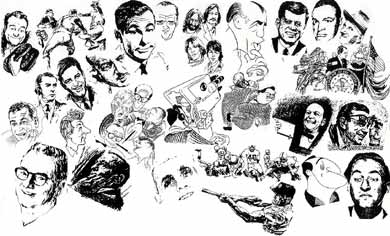
To search for a broadcast, please e nter a
Show Title, Personality, Airdate, Archive ID, Keyword or Phrase into the Search textboxes at the top of the page:
PRESERVING & ARCHIVING THE SOUND OF
LOST & UNOBTAINABLE ORIGINAL TV
(1946 - 1982)
"Preserving & disseminating important TV Audio
Air Checks, the video considered otherwise lost."
-Library of Congress
Vintage Television Audio Broadcasts
22,000 Titles - 20,000 Hours
Home | About us | Order Inquiry | TV Categories | Personality Index | Title Index
Archival Television Audio, Inc.
www.atvaudio.com
209 Sea Cliff Avenue
Sea Cliff, New York 11579
Attention: Phil Gries
|
Founder & Owner Phil Gries Director of Photography www.philgries.com |
"Any Inquiries"
Phone/Fax: (516) 656-5677
Email Us: gries@atvaudio.com
© 2002-2024 Collector's Choice Archival Television Audio, Inc.
All Rights Reserved.

Unique Visitors:
Visitor Counter
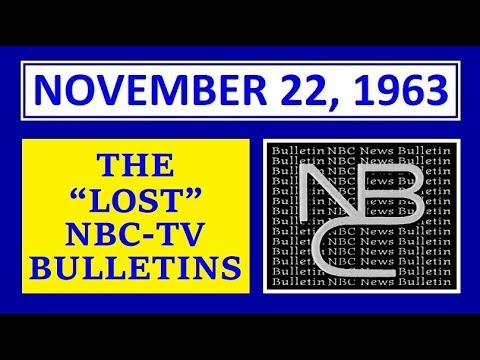
UNIQUE in the WORLD audio air check recordings by 20-year-old Phil Gries, archiving the first, second bulletins & initial NBC TV broadcast coverage of President John F. Kennedy's assassination. Not recorded by NBC or any other resource in the country.
- A&E TV SPECIAL - host Edwin Newman (11-22-1988) introduction - 25th Anniversary of JFK Assassination.
- NBC TV "Lost Don Pardo Bulletins" & Lost first 3:53 TV coverage (Phil Gries unique broadcast audio recording) unable to be video tape recorded or audio tape recorded by NBC.
- Phil Gries telephone interview with Don Pardo (5-14-1998).
- 10 minutes.
LIVE with PHIL GRIES
ARCHIVAL TELEVISION AUDIO - WEBINAR
Each Friday Evening from 7:30 - 8:30PM EST.
 RETRIEVABLE LOST MEMORIES
RETRIEVABLE LOST MEMORIESORDER
Vintage Television Audio Broadcasts
22,000 Titles
20,000 Hours

Testimonials
The Senior Moments Radio Broadcast show interviews Phil Gries about his Archival Television Audio archive and his restored documentary film, "Harlem School 1970"

Glen Cove Senior Center
January 23, 2018
 Phil Gries' recordings
Phil Gries' recordingsof vintage sounds
never grow old.

Hear Phil Gries on

Hear Phil Gries
and Joe Franklin
on Bloomberg Radio
(April 28, 2012)

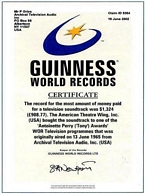
Home
Contact Us
ORDER INQUIRY
Hear Phil Gries on
National Public Radio
Archive Profile

ALL THINGS CONSIDERED
"Raising Ali"
(May 22, 2015)
Hear Phil Gries
on Sports Talk:
August 25, 2019
June 26, 2016
August 9, 2015


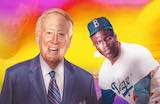


 Archive
ArchiveSearch Library
TV Categories
Personality Index
Title Index
ARSC Journal Article Publication: Lost TV Programs (1946-1972)

Hear Phil Gries presentations at ARSC (Association for Recorded Sound Collections) 2001, 2008, 2009, 2010, 2011, 2014.
Audio Samples

(Audio files may take 20 seconds or more to load)
1960's TV
Audio Player
103 Broadcast Samplers
AudioAndText™
Content
(Browser needs to
allow Flash content)
Content Collections
JFK Assassination
Coverage
NPR Walter Cronkite Essays
Civil Rights Movement (1956-1968)
Space Exploration (1956-1972)
Vietnam War
(1961-1975)
[854 Entries]
Company Information
About Us
Descriptions
Access
Fees
Archive
TIME-LINE
Accreditation
Master Materials
Research
Copyrights
Restricted Archive Titles
Catalogs
Related Materials
TV History
Lost Television

Jose Feliciano, at 70, listening to his FIRST TV variety show appearance (Al Hirt: FANFARE), telecast on July 17, 1965, when he was 19 years old.
TV Audio:
Rare & Valued
When TV Variety
Was King
This Anniversary Day
In Television History
ARSC/IASA London Conference: Why Collect?

News 12 Long Island
Live Television Profile:
Archival Television Audio, Inc
CAPTURED LIVE: CULTURES OF TELEVISION RECORDING AND STORAGE, 1945-1975

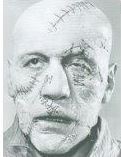
NBC MATINEE THEATER
FRANKENSTEIN
NBC TV - Feb. 5, 1957
8:23 min. excerpt
Phil Gries TV Audio Archive
Profile Segment

Harry Belafonte Hosts
The Tonight Show
5:21 min. excerpt
Password: Phil
(Case Sensitive)